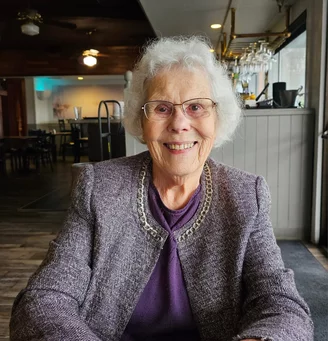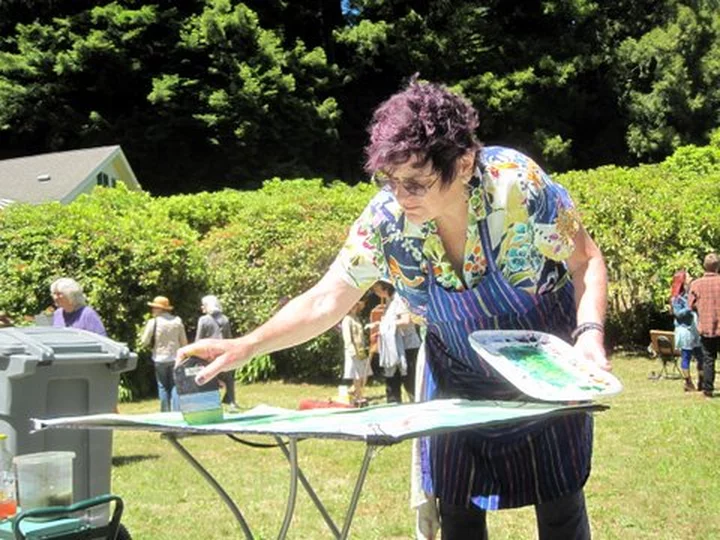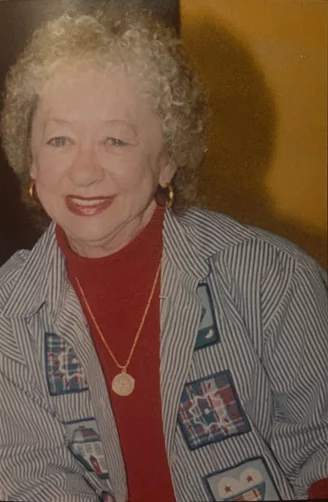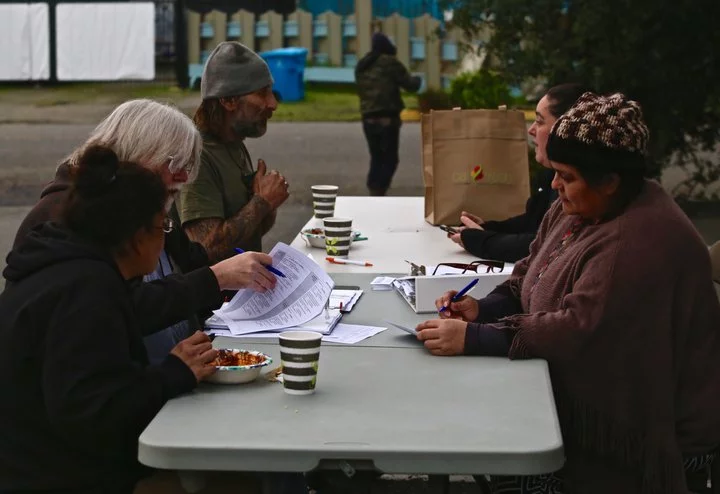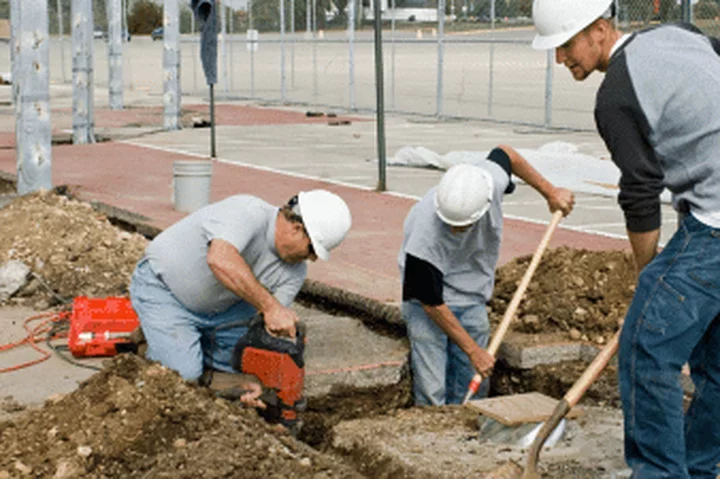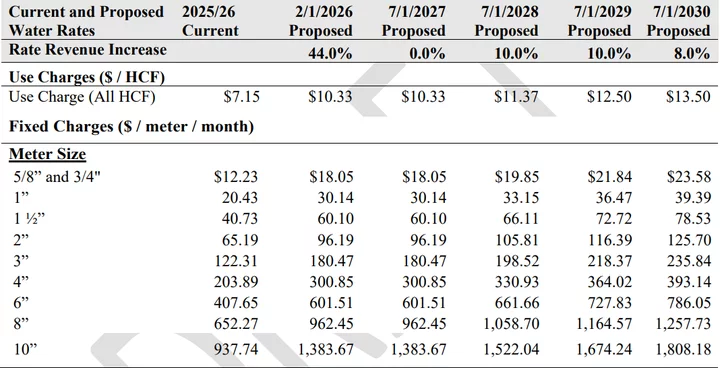OBITUARY: Annette Jeanne Jicha Young, 1932-2025
LoCO Staff / Today @ 6:56 a.m. / Obits
Annette Jeanne Jicha Young
February
20, 1932 - December 14, 2025
Annette was born in Arcata, at the old Trinity Hospital which was on the corner of 13th and G Street. She was the daughter of Vencil Francis Jicha and Lois Lorraine McNeil Jicha. They lived in Korbel until 1938, then they moved to Arcata, where her roots and life long history of Arcata grew.
Annette attended Arcata Union High School, Class of 1950, and was very involved with all their class reunions. She continued her education at Pacific Union College in Angwin, California, earning a degree in Music Education in 1954.
Annette began her teaching career at Willow Creek Elementary teaching music, but ended up teaching Kindergarten for two years. There, she met the love of her life, Vernon V. Young, who was the 5th and 6th grade teacher. They married April 3, 1955. Two weeks before their wedding they put a down payment on property in Willow Creek. Together they built what became Young’s Orchard, and was known for the best peaches, as well as cherries, apples, pears, plums. In 1957, they moved to Arcata, but kept growing the orchard for their weekends and summers.
Music was Annette’s lifelong language. She helped start the Music Teachers Association of CA, Humboldt County Division in 1956. In 1962, she became heavily involved with the American Guild of Organists, acting as the Dean and Secretary for many years. She was also a lifetime member of the Auxiliary of VFW post 9561.
From 1955 to 2007, Annette taught mostly private piano, organ and voice lessons. At just 15 years old, she played the organ and sang for her first funeral service at Paul’s Mortuary Chapel in Arcata. This started a 72 year part-time career with them, where she served not only as a musician, but also as a trusted employee in countless office roles. She became the face of Paul’s Chapel. Living in Arcata her whole life, she helped many families she knew during their difficult time. She also served as organist, pianist and choir director for the Arcata-McKinleyville Seventh-Day Adventist Church from 1946 to 2001. She also played for a “gazillion” (as she put it) weddings and funerals over the years.
Annette is survived by her children Dale Young (Janice), Donald Young (Kathy), and Deanne Albright Young: Grandchildren Joshua (Gali) Young, Amber (Brent) Hennrich, Tiffany (Travin) Davis, Ryan (Brook) Young, and J.T. Albright; and great-grandchildren Briana, (who was born on her birthday!), Braydon and Brynlee Hennrich, and Trek and Tahr Davis. She is also lovingly missed by her bonus granddaughter Kendra Turner, son-in-law Mike Albright, many nieces, nephews and cousins.
Annette was preceded in death by her husband, Vernon V. Young, her parents, and her sisters, Edna Jicha Irland and Adrienne Jicha Young.
A private burial was held. No public service is planned at this time.
###
The obituary above was submitted by Annette Jicha Young’s family. The Lost Coast Outpost runs obituaries of Humboldt County residents at no charge. See guidelines here. Email news@lostcoastoutpost.com.
BOOKED
Today: 9 felonies, 6 misdemeanors, 0 infractions
JUDGED
Humboldt County Superior Court Calendar: Today
CHP REPORTS
Us101 N / Sunset Ave Ofr (HM office): Traffic Hazard
7351 Tompkins Hill Rd (HM office): Hit and Run No Injuries
ELSEWHERE
Governor’s Office: Governor Newsom issues executive order expanding protections for survivors and support for businesses
RHBB: OnGoing: Demonstrators Gather in Eureka to Protest U.S. Military Action in Venezuela
Governor’s Office: On eve of LA Fire Anniversary, Governor Newsom announces housing push to keep survivors in their communities
RHBB: Trailer Engulfed in Flames at Larson’s Mobile Home Park in Hoopa
OBITUARY: David McGinty, 1943-2025
LoCO Staff / Today @ 6:56 a.m. / Obits
David S. McGinty was born September 22, 1943 to Raymond and Lorraine McGinty in Fairbury, Nebraska. He passed peacefully on December 29, 2025, after several years of failing health.
David and his family moved to Humboldt County in the early 1950s and lived in a logging camp in Grizzly Creek, a Con Camp in Happy Camp, then Arcata and Eureka.
David went to work for the City of Eureka in April of 1964, first working in the zoo where he became well acquainted with Bill the chimpanzee, then moving to the water treatment plant, eventually moving into City Hall. He became the Director of Community Services and retired from the City of Eureka in 2003. Of the many projects David was involved in over the years, he was most proud of the Wastewater Treatment plant, the Wharfinger Building and Small Boat Basin, and the waterfront Boardwalk.
Every August David could be found at the Humboldt County Fair, where he enjoyed his passion for horseracing. For more than 12 years he was the anonymous handicapper who wrote “The Sage” tip sheet.
Every September he joined his closest friends for deer hunting with the Grouse Mountain Hunting Club.
His final months were blessed with regular visits from Kairos, a six-year-old yellow lab with a truly angelic disposition. Those visits brought him great joy.
David was preceded in death by his parents, his brother Larry and sister-in-law Ilene, 8 aunts and uncles on his mother’s side, 8 aunts and uncles on his father’s side, and numerous cousins.
He is survived by his wife of 40 years, Judith; his daughter and son-in-law Jenifer and Chris Doane, and grandson Colin Doane of Eureka; former wife Betty Jean McGinty; stepdaughter Brandie Burnham and grandson Brandon Burnham; stepson Todd Garner and grandchildren Trevor, Dylan and Sydney Garner.
A celebration of David’s life will be held at his Wharfinger Building on Saturday, February 21, 2026, at 3 p.m. Please put it on your new, 2026 calendar, now.
If you would like to honor David’s memory with a charitable donation we suggest Hospice of Humboldt, Food for People, Miranda’s Rescue, or the local organization most dear to your heart.
###
The obituary above was submitted by David McGinty’s family. The Lost Coast Outpost runs obituaries of Humboldt County residents at no charge. See guidelines here. Email news@lostcoastoutpost.com.
OBITUARY: Cheryl Lynn Peterson Rau, 1944-2025
LoCO Staff / Today @ 6:56 a.m. / Obits
Cheryl Lynn Peterson Rau
June 10, 1944 – December 25,
2025
Cheryl lived her life with creativity and love. She was the first of four children born to Shirley and Allen Peterson in Santa Cruz on June 10, 1944. It was not an easy birth and Papa Allen was participating in D-Day and could not be reached. Cheryl grew up in Los Altos Hills, a “watercolor person” even as a child. After graduating from Cubberly High School in 1962, she attended Foothill Community College, and later Humboldt State University, where she earned her BA in Art in 1974. Cheryl met her future husband Martin Rau in a Ceramics class at HSU in 1969.
Cheryl and Martin soon married and had two children, Coren in 1976 and Carl in 1979. They had purchased a large plot of land in Loleta where they grew Christmas trees, developing Misty Mountain Tree Farm
During this time she took classes at College of the Redwoods in Early Childhood Education, pursuing her credential. One of these classes was taught by Pat McCutcheon. As the academic year progressed, Cheryl and Pat’s friendship grew. In 1984 Pat relocated to the College of the Redwoods Crescent City campus for the next year, and Cheryl came to visit for a weekend. That was the beginning of a relationship that was to last forty years.
In 1985 Cheryl ended her marriage with Martin and moved with Coren and Carl to join Pat and her son Josh in Crescent City. Over the next six years, the five of them built a life together. Cheryl pursued her secondary teaching credential at HSU, earning it in 1988. Unfortunately, she was not able to secure a teaching position in Crescent City because of her relationship with Pat. However, they made lasting friends in the Del Norte community.
A faculty position opened up for Pat on the Eureka campus in 1990, and the whole family was excited to return to Humboldt County. Pat and Cheryl bought a home in Sunnybrae and soon joined the Humboldt Unitarian Universalist Fellowship. In 1992 the Rev. John Cooper married them on the front lawn of their home with friends and family celebrating.
In 2008, the first day same sex weddings were legal, Cheryl and Pat were married at the Eureka Courthouse, followed by a celebration with friends and family at the Fellowship.
She was an avid gardener and gifted artist. After all three children were grown, the couple had the garage converted to an art studio for Cheryl. Later, on the large front lawn, she would create soccer goal posts from her easel for growing grandson Dylan.
Cheryl taught for thirteen years at the College of the Redwoods Child Development Center, teaching young children of CR students, and serving as interim Director.
And through it all, she was painting! She was a gifted watercolorist, creating large and medium-sized paintings as well as one of-a-kind cards. She painted scarlet poppies in her garden, pink flamingos at Sequoia Zoo, and captured countless landscape scenes across Humboldt County and beyond. Cheryl was an active member of the Humboldt County art community, participating in several Humboldt County Open Studios, many shows at the Redwood Art Association, and numerous other community events and venues. In 2022 Cheryl was selected to participate in the 15th annual Ingrid Nickelson Trust Women’s Juried Exhibition at the Morris Graves Museum of Art in Eureka. The Exhibition was juried by painter Joan Gold, who selected Cheryl’s painting Garden Explosion for an Ingrid Nicholson Trust Award.
Cheryl is survived by her devoted wife of forty years, Pat McCutcheon, her sons Josh Kieselhorst, Coren Rau and Carl Rau, grandson Dylan Kieselhorst, brothers Jon and Robert Peterson, and sister Cyndie Peterson Paul, as well as numerous extended family in the San Francisco Bay Area. She will be sorely missed by many more.
A memorial followed by a potluck will be held at the Humboldt Unitarian Universalist Fellowship, 24 Fellowship Way off Jacoby Creek Road in Bayside, on Sunday, January 18, 2026, 3 p.m. A selection of her paintings will be on display there. In honor of Cheryl’s colorful life, “Cheryl Chic” In lieu of flowers, donations may be made in Cheryl’s name to Companion Animal Foundation in Eureka, or to the Fellowship in Bayside.
###
The obituary above was submitted on behalf of Cheryl Rau’s family. The Lost Coast Outpost runs obituaries of Humboldt County residents at no charge. See guidelines here. Email news@lostcoastoutpost.com.
OBITUARY: Connie Tye, 1936-2025
LoCO Staff / Today @ 6:56 a.m. / Obits
Joanne (aka “Connie”) Tye, 89, of Fortuna, passed away peacefully at home on Wednesday, December 31, 2025, with her children Rusty and Dennis and grandchildren Sara and Jessica caring for her.
Born on April 22, 1936, to Suzanne Rodgers, Connie lived a life filled with joy, love, and cherished connections with family and friends.
She was renowned for keeping an immaculate home, where she and her family delighted in hosting lively dinner parties. Connie treasured her lunch and dinner dates with loved ones, always quick to appreciate a good waitress — a nod to her own years spent in the profession. For decades, she was a beloved bartender at the Playroom, creating countless warm memories for patrons and staff alike.
Connie cherished the many years spent with family in Del Loma and Weaverville, building a lifetime of treasured moments. Her animals held a special place in her heart, as dear to her as her children; over the years, she adored and cared for several dachshunds.
An avid reader, she spent many happy hours immersed in novels, especially those by James Patterson, and loved exchanging books with her girlfriends — often followed by a well-deserved cocktail hour.
She is survived by her sons, Marty Collings, Dennis Collings and Rusty Tye, as well as her grandchildren: Alan Collings, Sara Collings, Jason Collings, Julissa Ridinger and Jessica Tye, plus great-grandchildren and great-great-grandchildren. She was preceded in death by her husband Alan Tye, sons Doug Collings and Ricky Tye and her dear friend and partner, Pete Johnson.
She will be remembered as a devoted matriarch and a loyal friend. In lieu of flowers, the family asks that you raise a glass to her, in her own words, “one tough old broad.”
There will be a celebration of life, date TBD.
###
The obituary above was submitted by Connie Tye’s family. The Lost Coast Outpost runs obituaries of Humboldt County residents at no charge. See guidelines here. Email news@lostcoastoutpost.com.
The Point in Time Count is Almost Upon Us! Volunteers Needed to Help Try to Count All the County’s Homeless Population on Jan. 23
LoCO Staff / Yesterday @ 4:50 p.m. / Homelessness
A moment from the 2019 count. File photo: Andrew Goff.
###
CORRECTION: The headline of this story originally gave the wrong date for the count. It is Friday, Jan. 23. The Outpost regrets the error.
###
From the Humboldt County Department of Heath and Human Services:
The Humboldt Housing & Homelessness Coalition (HHHC) will conduct a Point-in-Time count of people experiencing homelessness during the morning of Friday, Jan. 23, and volunteers are needed to assist.
The biennial count, known by many as the PIT, is a U.S. Department of Housing and Urban Development requirement. Numbers from the count are used by the State of California to allocate funding to counties to address homelessness and housing.
Humboldt County Department of Health & Human Services PIT Count Coordinator Robert Ward said it’s important to get a count of how many people are experiencing homelessness in Humboldt County that is as accurate as possible. “The state uses PIT count results to determine how much homelessness funding will be allocated to each region,” he said. “We are counting on volunteers to ensure we have complete coverage of all the areas where people experiencing street homelessness may be found.”
Volunteers will gather into teams early on the morning of Jan. 23, and start counting at 6 a.m. In addition to a head count, volunteers will ask people where they slept the night before and gather other general demographic information.
For more information and to sign up to volunteer, visit https://humboldt.pointintime.info/.
The HHHC is also collecting information about locations where people are known to be residing. If you are able to contribute information on known locations, please register as a volunteer so that you can input that information, even if you do not plan to assist us on the morning of the count. Questions can be directed to HHHC@co.humboldt.ca.us.
The HHHC is a coalition of housing advocates, businesses, funders, elected officials, services and housing providers, faith-based organizations and other community stakeholders working together to identify and address local housing needs. In Humboldt County, the HHHC is the lead group for homelessness issues and the federally designated Continuum of Care. For more information about the HHHC, visit humboldtgov.org/HHHC.
Arcata Water Rate Hearing Pushed Back; Also, What’s it All About?
Dezmond Remington / Yesterday @ 4:04 p.m. / Government
Some fellas hard at work. Photo from City of Arcata.
A public hearing on a proposed increase to Arcata’s water rates has been pushed back until March.
If you didn’t know: for a whole variety of reasons, Arcata’s city council voted several months ago to raise the price it charges to deliver water for 6,600 customers and remove wastewater from 5,600 customers. When a city does that, it has to hold a public hearing where people can lodge complaints and learn more about the process.
Originally scheduled for this Wednesday, Jan. 7, it’s been rescheduled for March 18. An informational meeting that was supposed to follow the day after will now be held late this month or in early February.
If more than 50% of people representing the affected parcels complain, Arcata can’t legally raise the water rates. Those complaints must be either made in-person or sent to city hall (with the address or an assessor’s parcel number and the name and signature of the customer; they also must be hard copies. Emails or faxes don’t count).
Various posts floating around online community nexuses like Nextdoor or Facebook claim that the rates will go up by 44% if approved. That’s partially true — the water charge, measured by the hundred cubic feet (HCF), will go up from $7.15 to $10.33 in April if the change is made. However, there will no longer be a wastewater fee if a customer uses more than four HCF in a month. Arcata will instead only charge flat fees for single-family homes. Users may pay less for their wastewater than they do now.
Tables detailing the proposed increases. All screenshots from Bartle Wells Associates.
Arcata residents’ water bills are split roughly 35/65 between their water and wastewater charges, so the city predicts that the total cost of the average bill will only increase by about 14%.
Commercial customers will still be subject to charges if they use more than 4 HCF of wastewater service.
The flat wastewater charge will be $86.24 monthly if the plan is approved. Both the variable water rate and the wastewater fee will rise again in 2028, 2029, and 2030. The last comparable increase was in 2021, when Arcata raised its water rates 37%.
When the rates cease increasing in 2030, the water rate will be $13.50 per HCF and $104.17 for the wastewater fee every month for single-family homes, plus a $23.58 monthly charge for customers with ⅝ and ¾ inch meters.
Right now the average single-family household in Arcata pays $136.93 monthly for all of their water usage. In 2030, they’ll pay an average of $155.94 if the rate increase goes into effect. The current rates are comparable with the area average, though the increase will make Arcata’s water services some of the most expensive in the North Coast.
Arcata’s water costs vs. other nearby city’s. The city council selected the option at the far right in October.
In California, cities can’t collect more revenue than they need to keep their services afloat. Arcata feels the increase is necessary because much of its water infrastructure is aging and needs to be replaced (the current steel waterline replacement project accounts for around $12 million of it); it’ll cost around $36 million over the next five years to repair it all, according to public finance advisors Bartle Wells Associates, who performed the water rate study that Arcata is basing the increase off of. Arcata will likely take on roughly $30 million in debt to pay for much of it, though the water rate increases will help cover some of the cost. Increasing the water rates will help the city stay on top of paying off the debt.
The city also wants to stay ahead of rising inflation and labor and materials costs.
By 2030, Arcata expects to have $8.5 million in the water fund. Right now, it holds around $5.9 million.
Not everyone is thrilled about the plan. One Nextdoor post called the increase “absurd,” focusing on the 44% water rate increase, and encouraged people to lodge complaints with Arcata.
That’s not universally the case.
“I thank my lucky stars that I am blessed enough to live in a place where all the fresh water I need comes right out of the tap on demand, and that all the waste goes away without having to think about it,” said another commenter. “The systems that allow all this to happen and the maintenance involved are massive, and if it’s not kept up with we wouldn’t be able to live the privileged first world luxury and miracle that it is.”
Humboldt County Public Defender’s Office Nabs $743,864 State Grant to Expand Holistic Defense Services
LoCO Staff / Yesterday @ 10:33 a.m. / Local Government
The Humboldt County Public Defender’s Office, located at 1001 Fourth Street in Eureka. | File photo by Andrew Goff.
PREVIOUSLY
###
Press release from the County of Humboldt:
The Humboldt County Public Defender’s Office was recently awarded $743,864 from the Office of the State Public Defender’s Expanded Public Defense Grant to expand its holistic defense services.
Holistic defense combines legal representation with social work, reentry support and community-based services to help the Public Defender’s clients stabilize their lives and avoid future involvement with the criminal legal system.
Funding received will support additional staffing and program capacity to enhance coordination between attorneys, social workers, investigators and community partners. Expanding client-centered services that bring together multiple areas of support will help the Public Defender’s Office address the underlying social, behavioral health and economic challenges that often lead to their clients’ involvement with the justice system.
“This funding allows our office to better serve clients by addressing the root causes that bring people into contact with the justice system,” said Humboldt County Chief Public Defender Luke Brownfield. “By expanding holistic defense services, we can improve case outcomes, promote public safety and connect clients to critical resources such as housing, treatment and benefits.”
The Humboldt County Public Defender’s Office has been a leader in implementing holistic defense practices in rural Humboldt County, recognizing that effective legal advocacy extends beyond the courtroom and into the broader context of clients’ lives.
Funds received from the Office of the State Public Defender reflects the state’s commitment to strengthening defense services for clients who cannot afford to hire a private attorney and promoting equitable access to justice across California.
For more information about the Humboldt County Public Defender’s Office, visit HumboldtGov.org/PublicDefender.

